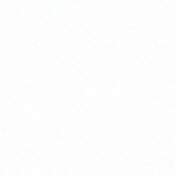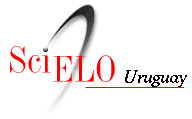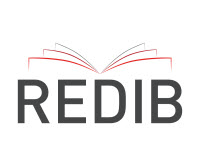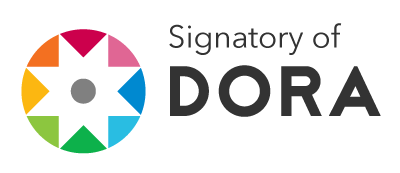Software Libre, Ciencia Libre
explorando algunas enseñanzas que el software libre puede aportar a la ciencia abierta
Resumen
En primer lugar, en este trabajo analizo las diferencias y matices en la filosofía que hay tras las palabras libre y abierto, tal como se cristalizaron en el campo del software. Procuro también, a través de su historia y el análisis de su ecosistema, esbozar la necesaria deconstrucción del paradigma de la propiedad intelectual.
En una segunda parte, un breve relato de la historia de la informática, el software libre y la Internet permite identificar puntos comunes en los procesos de la ciencia y del desarrollo de software, y algunas características o realizaciones del mundo en la era digital que pueden aportar a la ciencia abierta.
En la tercera parte especulo brevemente, a partir de la trayectoria que ha sido hasta ahora la del software libre, sobre los alcances posibles para una ciencia abierta, antes de concluir volviendo al punto central de la necesidad de una reforma radical de la regulación de la economía de lo inmaterial.
Descargas
Citas
Allison, J. R., Dunn, A., & Mann, R. J. (2006). software patents, incumbents, and entry. Tex. L. Rev., 85, 1579.
Alvarellos Maceira, F., Bañobre Dopico, D., & - nbek .-. (2010). software libre. https://www.youtube.com/watch?v=FvLJ2JotttM
Arup, C., & Van Caenegem, W. (2009). Intellectual property policy reform: Fostering innovation and development. Edward Elgar Publishing. https://books.google.com.uy/books?id=9BFdihBYkT0C
Barba, L. A. (2012). Reproducibility PI Manifesto. 956610 Bytes. https://doi.org/10.6084/M9.FIGSHARE.104539
Boyle, J. (2003). The second enclosure movement and the construction of the public domain. Law & Contemp. Probs., 66, 33.
Calaprice, A. (2011). The Ultimate Quotable Einstein. Princeton University Press &The Hebrew University of Jerusalem.
Carpenter, B. E. (1996). Architectural Principles of the Internet (RFC 1958). https://datatracker.ietf.org/doc/html/rfc1958
Creative Commons. (2016). Understanding Free Cultural Works. Creative Commons. https://creativecommons.org/share-your-work/public-domain/freeworks/
De Waal, F. (2016). Are we smart enough to know how smart animals are? WW Norton & Company.
Díaz Charquero, P., & Goñi Mazzitelli, M. (2021). INFORME DE RESULTADOS DE LA ENCUESTA:¿Cuánto sabes sobre derecho de autor? (p. 24). DatySoc. https://datysoc.org/wp-content/uploads/2021/09/Resultados-de-la-encuesta-Cuanto-sabes-sobre-derecho-de-autor.pdf
Ebert, C., Gallardo, G., Hernantes, J., & Serrano, N. (2016). DevOps. Ieee software, 33(3), 94-100.
Editorial Policy. (s. f.). IPOL Journal · Image Processing On Line. http://www.ipol.im/meta/policy/
FFII. (2004). Patented Webshop. http://webshop.ffii.org/
FFII. (2007, marzo 6). Patentability and Patent Governance in Europe. https://web.archive.org/web/20070306012134/http://eupat.ffii.org/
Foster, E. D., & Deardorff, A. (2017). Open science framework (OSF). Journal of the Medical Library Association: JMLA, 105(2), 203.
Foucault, M. (1970). Que’est-ce qu’un auteur? En Dits et écrits, 1954-1988, Tome III: 1976-1979: Vol. Texte n° 258. Gallimard. https://www.psychaanalyse.com/pdf/QU%20EST-CE%20QU%20UN%20AUTEUR%20-%20MICHEL%20FOUCAULT%20-%20CONFERENCE%201970%20(25%20pages%20-%20246%20Ko).pdf
Free software Foundation, P. G. (1998). ¿Qué es el software libre? https://www.gnu.org/philosophy/free-sw.html
Free software Foundation, P. G. (2004, 2021). Lista de licencias con comentarios. https://www.gnu.org/licenses/license-list.es.html
FreedomDefined. (2006). Definition of Free Cultural Works. https://freedomdefined.org/Definition
Fundación Vía libre. (2013, octubre 10). Elementos para una reforma del derecho de autor. FUNDACIÓN VÍA LIBRE. https://www.vialibre.org.ar/elementos-para-una-reforma-del-derecho-de-autor/
Girard, J.-Y., Gödel, K., Nagel, E., & Newman, J. R. (1997). Le Théorème de Gödel. Seuil.
Guadamuz González, A. (2005). Open science: Open source licenses in scientific research. NCJL & Tech., 7, 321.
Hamerly, J., Paquin, T., & Walton, S. (1999). Freeing the Source—The Story of Mozilla. En C. DiBona & S. Ockman, Open sources: Voices from the open source revolution. O’Reilly Media, Inc. https://walidumar.my.id/buku.elektronik/networking.umum/O'Reilly_-_Open_Sources,_Voices_from_the_Open_Source_Revolution.pdf
Kapczynski, A. (2016). Order without intellectual property law: Open science in influenza. Cornell L. Rev., 102, 1539.
Kingston, W. (2001). Innovation needs patents reform. Research Policy, 30(3), 403-423.
Kingston, W. (2009). Why patents need reform, and some suggestions for it. Intellectual Property Policy Reform: Fostering Innovation and Development, 11.
La Quadrature du Net. (s. f.). Redes de telecomunicaciones. La Quadrature du Net. Recuperado 8 de octubre de 2021, de https://www.laquadrature.net/es/telecomunicacion/
La Quadrature du Net. (2012). Eléments pour la réforme du droit d’auteur et des politiques culturelles liées. La Quadrature du Net. https://www.laquadrature.net/elements-pour-la-reforme-du-droit-dauteur-et-des-politiques-culturelles-liees/
Lee, R. S., & Wu, T. (2009). Subsidizing creativity through network design: Zero-pricing and net neutrality. Journal of Economic Perspectives, 23(3), 61-76.
Limare, N., Oudre, L., & Getreuer, P. (2012). IPOL: Reviewed publication and public testing of research software. 2012 IEEE 8th International Conference on E-Science, 1-8.
Meyer, D., & Bush, R. (2002). Some Internet Architectural Guidelines and Philosophy (Request for Comments RFC 3439). Internet Engineering Task Force. https://doi.org/10.17487/RFC3439
Moglen, E. (2013). Snowden and the Future. http://snowdenandthefuture.info/
Moyse, P.-E. (1997). La Nature du droit D’auteur: Droit de Propriete ou Monopole. McGill, LJ, 43, 507.
Naciones Unidas. (1948). La Declaración Universal de Derechos Humanos. Naciones Unidas; Naciones Unidas. https://www.un.org/es/about-us/universal-declaration-of-human-rights
Perens, B. (1999). The Open Source Definition. En C. DiBona & S. Ockman, Open sources: Voices from the open source revolution. O’Reilly Media, Inc. https://walidumar.my.id/buku.elektronik/networking.umum/O'Reilly_-_Open_Sources,_Voices_from_the_Open_Source_Revolution.pdf#%5B%7B%22num%22%3A2108%2C%22gen%22%3A0%7D%2C%7B%22name%22%3A%22XYZ%22%7D%2C0%2C792%2Cnull%5D
Quarterman, J. S. (1990). The matrix: Computer networks and conferencing systems worldwide. Digital Press.
Rischard, J.-F. (2001). High Noon: We Need New Approaches to Global Problem-Solving, Fast. Journal of International Economic Law, 4(3), 507-525.
Ritchie, D. M., Kernighan, B. W., & Lesk, M. E. (1988). The C programming language. Prentice Hall Englewood Cliffs.
Royce, W. W. (1987). Managing the development of large software systems: Concepts and techniques. Proceedings of the 9th international conference on software Engineering, 328-338.
Schweik, C. M. (2007). Free/open-source software as a framework for establishing commons in science. En C. Hess & E. Ostrom (Eds.), Understanding knowledge as a commons: From theory to practice (pp. 277-309). MIT Press. https://www.wtf.tw/ref/hess_ostrom_2007.pdf#page=292
Snowden, E. (2019). Permanent record. Pan Macmillan.
Stallman, R. (1999). The GNU Operating System and the Free software Movement. En C. DiBona & S. Ockman, Open sources: Voices from the open source revolution. O’Reilly Media, Inc. https://walidumar.my.id/buku.elektronik/networking.umum/O'Reilly_-_Open_Sources,_Voices_from_the_Open_Source_Revolution.pdf
Stallman, R. (2011). Keep Control of Your Computing, So It Doesn’t Control You! https://www.gnu.org/philosophy/keep-control-of-your-computing.en.html#top
Stallman, R. (2015a). Free software, free society: Selected essays of Richard M. Stallman. Free software Foundation. http://www.gnu.org/doc/fsfs3-hardcover.pdf
Stallman, R. (2015b). Why Open Source Misses the Point of Free software. En Free software, free society: Selected essays of Richard M. Stallman (pp. 75-82). Free software Foundation (Cambridge, Mass.). http://www.gnu.org/doc/fsfs3-hardcover.pdf
Torvalds, L. (1999). The Linux Edge. En C. DiBona & S. Ockman, Open sources: Voices from the open source revolution. O’Reilly Media, Inc. https://walidumar.my.id/buku.elektronik/networking.umum/O'Reilly_-_Open_Sources,_Voices_from_the_Open_Source_Revolution.pdf#%5B%7B%22num%22%3A753%2C%22gen%22%3A0%7D%2C%7B%22name%22%3A%22XYZ%22%7D%2C0%2C792%2Cnull%5D
Viñar Ulriksen, D. (2020). Panoptique global contre réseaux communautaires. Quelques notes à propos de Permanent Record, d’Edward Snowden. Desexil, praxis - mémoire -archives. https://desexil.com/panoptique-global-contre-reseaux-communautaires-quelques-notes-a-propos-de-permanent-record-dedward-snowden/
Wilkinson, H. (2018, noviembre 26). El desarrollo de software como debería ser. https://www.youtube.com/watch?v=x4CXWBW5fMo
Wu, T. (2003). Network neutrality, broadband discrimination. J. on Telecomm. & High Tech. L., 2, 141.
Yehudi, Y., Aragon, S., Mun, Y., Konovalov, A., Knight, V., Rivière, P., Willighagen, E., Ilozulu, C., & Morley, A. (2019). Code is Science Manifesto: First Release. https://doi.org/10.5281/zenodo.3484107
Derechos de autor 2022 Daniel Viñar Ulriksen

Esta obra está bajo licencia internacional Creative Commons Reconocimiento 4.0.







.jpg)




















